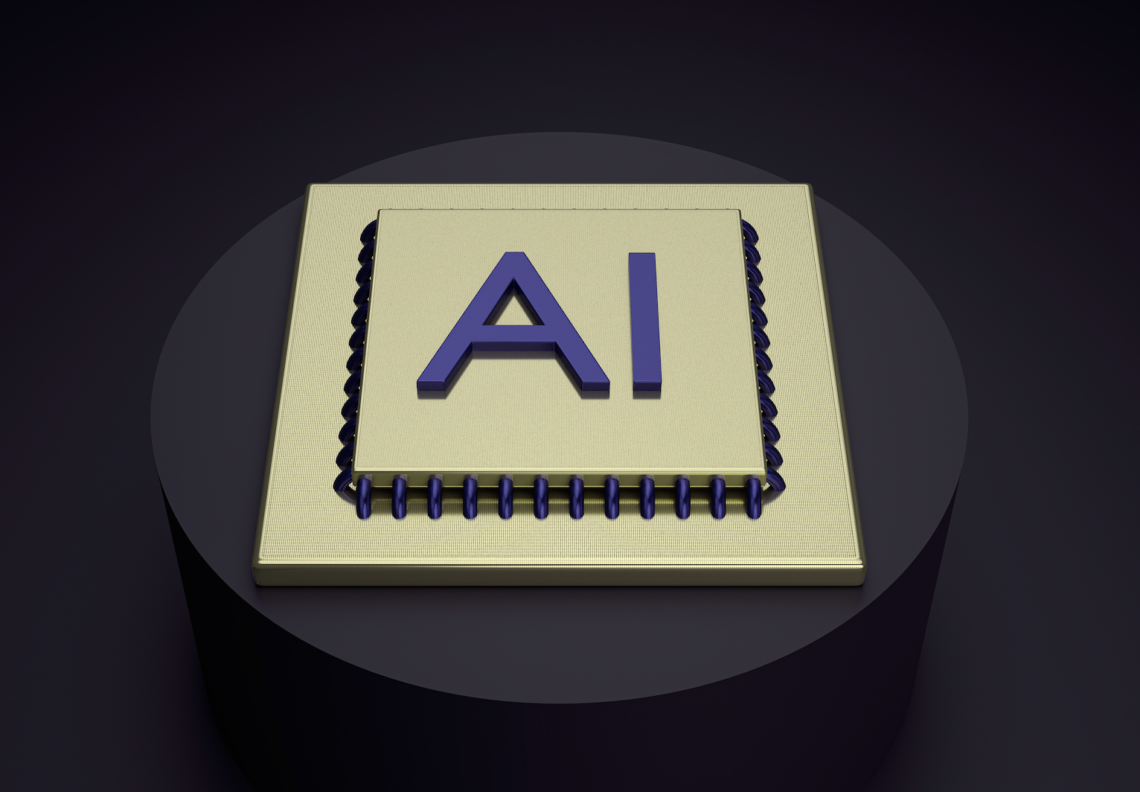At press time the 27-member EU bloc was still haggling over how to regulate AI, an illustration of the challenge facing governments around the world as they weigh the advantages of the technology against the need to set guardrails. Much is riding on the EU AI Act, which could become the blueprint for other governments as countries seek to provide an alternative to the U.S.’ s light-touch approach and China’s interim rules.
Against this backdrop a handful of tech giants jockeying to dominate the sector announced their latest power plays: Google launched a new set of generative artificial intelligence models that will run directly on mobile phones; Elon Musk said he is raising $1 billion in funding for xAI, an AI company he is launching to rival OpenAI, Microsoft and Alphabet’s Google; and Meta and IBM launched a coalition of more than 50 artificial intelligence companies and research institutions that are pushing a so-called open model of AI, hoping to gain traction in the fast-growing market.
Google described Gemini as its “largest, most capable and most general” AI System, which can analyze information from images and audio and has sophisticated reasoning and planning capabilities. It started powering Google’s Bard chatbot this week and will be launched more broadly into its search engine from next year. A version of Gemini, known as “nano”, was designed specifically for running on mobile devices and will be integrated into Google’s latest Pixel phones.
Google told the Financial Times this would “run natively” on the device, and that the “nano” model was “optimised for mobile — so Android developers can easily build AI apps and features that work offline, or use personal [information] better kept private on-device”. This advance could help answer an economic problem with the technology. Running generative AI with the computing power available on mobile handsets, rather than through the Cloud on servers operated by big tech groups, would vastly reduce the costs of operating such systems. This also provides a layer of assurance for those wanting to keep private data restricted to a device.
“I believe the transition we are seeing right now with AI will be the most profound in our lifetimes, far bigger than the shift to mobile or to the Web before it,” said Google and Alphabet chief executive Sundar Pichai in a blog post. “This new era of models represents one of the biggest science and engineering efforts we’ve undertaken as a company.”
Elon Musk, who helped launch OpenAI but left after a dispute, is creating his own AI company and hinted in an interview with the Wall Street Journal that Twitter (now known as X) and Tesla could be partners, an arrangement that could mirror Microsoft and Open AI’s relationship.“I think there should be a significant third horse in the race,” Musk told the Journal in an interview last May.
Meanwhile, companies that have their own AI products but are struggling to catch up with the likes of OpenAI and its investment partner, Microsoft, are pooling resources to stand behind “open innovation and open science” in AI. The alliance’s members include Meta, IBM, Intel, Oracle, Cornell University, and the National Science Foundation.
Like IBM, Meta has developed its own AI models, but has fallen behind in recent years. The tech giant has sought to stake its claim in the AI market as an open-source AI system through its Llama 2 AI model. “By bringing together leading developers, scientists, academic institutions, companies and other innovators, we will pool resources and knowledge to address safety concerns while providing a platform for sharing and developing solutions that fit the needs of researchers, developers, and adopters around the world,” said a Meta blog posting.”
Opinion is divided over the merits of open source. Some believe it is crucial to competition: Since the upheaval at OpenAI in late November, businesses want to have more providers of AI products to diminish the risk of working with a single vendor, and are exploring other AI systems as viable alternatives.
“The platform that will win will be the open one,” Yann LeCun, Meta’s chief AI scientist, was quoted as saying in an interview with The New York Times.
Some industry observers say Llama2 is not really open-source. Mark Dingemanse, a coauthor of research conducted by the Netherlands’ Radboud University presented at the ACM Conference on Conversational User Interfaces, had this to say about the Llama 2 model: “Meta using the term ‘open source’ for this is positively misleading: There is no source to be seen, the training data is entirely undocumented, and beyond the glossy charts the technical documentation is really rather poor. We do not know why Meta is so intent on getting everyone into this model, but the history of this company’s choices does not inspire confidence. Users beware.”
At press time media reports said that a compromise was being reached on the EU AI Act. Foundational models will be regulated but free and open-source software may be excluded from the regulation’s scope unless they are a high-risk system, prohibited applications or an AI solution at risk of causing manipulation, reported Euractiv.
IN OTHER NEWS THIS WEEK
ARTIFICIAL INTELLIGENCE
EY Claims Success In Using AI To Find Audit Frauds
Big Four accounting firm EY told the Financial Times that when it tried out an artificial intelligence system trained at recognising fraud on the accounts of some of its UK audit clients earlier this year, the results were striking. The new system detected suspicious activity at two of the first 10 companies checked. The clients subsequently confirmed that both cases had been frauds. This early success illustrates why some in the industry believe AI has great potential to improve audit quality and reduce workloads. The ability of AI powered systems to ingest and analyse vast quantities of data could, they hope, provide a powerful new tool for alerting auditors to signs of wrongdoing and other problems. Yet auditors disagree sharply about how far they can rely on a technology that has not yet been widely tested and is often poorly understood.
BlackRock Plans To Roll GenAI Out To Clients
BlackRock plans to roll out generative artificial intelligence tools to clients in January as part of a larger drive to use the technology to boost productivity, the $9.1tn asset manager told employees December 6.. The world’s largest money manager said in a memo to staff that it has used generative AI to construct a “co-pilot” for its Aladdin and eFront risk management systems. Clients will be able to use BlackRock’s large language model technology to help them extract information from Aladdin. Companies around the world are racing to use generative AI to create new products and mine proprietary data for financial advantage. BlackRock, which already draws more than 8 % of revenue from technology services, is aiming to get ahead of its asset management peers.
Getty Lawsuit Against StablityAI To Go To Trial In The UK
A UK court ruled a lawsuit from Getty Images against Stable Diffusion creator Stability AI can move on to trial, finding merit in Getty’s insistence that its copyrighted material was used to train AI models.
ENERGY
International Plan To Boost Fusion Energy Launched At Cop28
U.S. special climate envoy John Kerry on December 5 launched an international engagement plan to boost nuclear fusion at Cop28, saying the emissions-free technology could become a vital tool in the fight against climate change. The plan involves 35 nations and would focus on research and development, supply chain issues, and regulation, and safety.
UAE Signs Deal With Bill Gates’ Nuclear Company On Advanced Reactors
Bill Gates’ advanced nuclear reactor company TerraPower LLC and the United Arab Emirates’ state owned nuclear company ENEC said December 5 that they have agreed to study the potential development of advanced reactors in the UAE and abroad.The memorandum of understanding comes amid a push by the UAE to expand its nuclear energy capacity, and a pledge by over 20 nations at the COP28 climate conference in Dubai to triple nuclear deployment this decade to fight climate change.
CYBERSECURITY
Europe Agrees On Rules to Protect Smart Devices From Cyber Threats
EU countries and EU lawmakers on December 7 agreed to rules to protect laptops, fridges, mobile apps and smart devices connected to the Internet from cyber threats following a spate of such attacks and ransom demands in recent years around the world.Proposed by the European Commission in September last year, the Cyber Resilience Act will apply to all products connected either directly or indirectly to another device or to a network.
HSBC Tests Protecting FX Trading From Attacks Using Quantum Computing Advances
HSBC has completed what it says is the world’s first trial of a tool designed to protect highly sensitive financial data from cyber criminals seeking to harness the power of next-generation quantum computers to launch future attacks.The British bank said it used the tool to safeguard a trade on its proprietary platform, HSBC AI Markets, exchanging 30 million euros for U.S. dollars. The test illustrates how banks are trying to get ahead of cyber criminals who could use advances in computing to access trading data in global financial systems such as the $7.5 trillion per day foreign exchange market.
FOOD AND BEVERAGE
Intelligent Growth Solutions To Power UAE GigaFarm Capable Of Replacing 1% Of Fresh Produce Imports
ReFarm, a consortium in the United Arab Emirates created by Dubai-based SSK Enterprises and process engineering solutions group Christof Global Impact (CGI), has signed an agreement with the FoodTech Valley to build a circular, closed-loop “GigaFarm” to boost the country’s food security and decarbonize its food industry. Vertical farming technology company Intelligent Growth Solutions (IGS) will provide the infrastructure for the farm, which will grow 2 billion plants a year, replacing 1% of the country’s fresh produce imports, according to Agfunder News. IGS’ vertical towers will be combined with five other complementary technologies to create a closed-loop circular waste-to-value system, capable to recycling more than 50,000 tons of food waste each year.
To access more of The Innovator’s News In Context articles click here.






